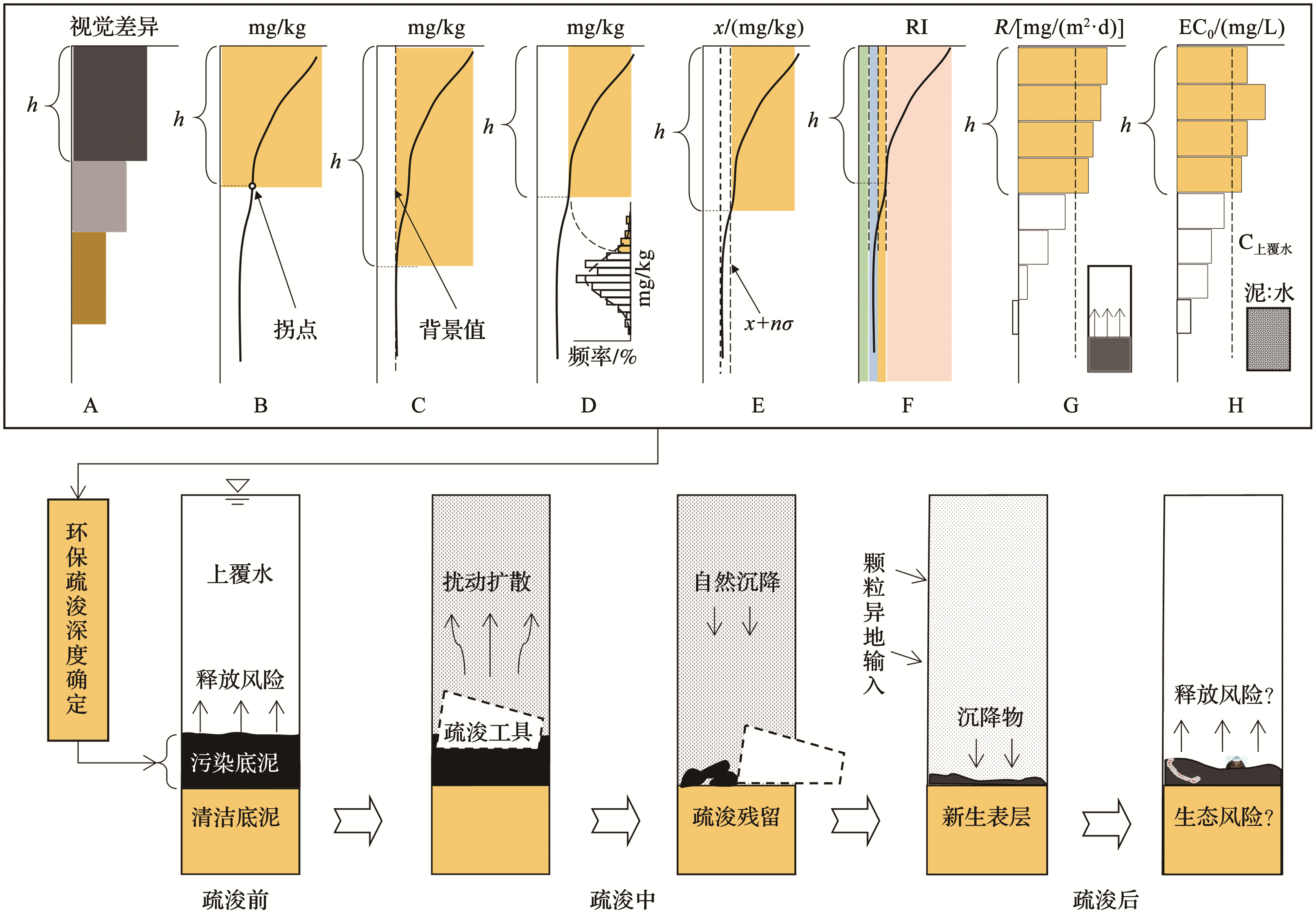|
近20年来我国沉积物环境与污染控制研究进展与展望
|
范成新 1(  ), 刘敏 2, 王圣瑞 3, 方红卫 4, 夏星辉 5, 曹文志 6, 丁士明 1, 侯立军 7, 王沛芳 8, 陈敬安 9, 游静 10, 王菊英 11, 盛彦清 12, 朱伟 13
|
|
Research Progress and Prospect of Sediment Environment and Pollution Control in China in Recent 20 Years
|
Chengxin FAN 1(  ), Min LIU 2, Shengrui WANG 3, Hongwei FANG 4, Xinghui XIA 5, Wenzhi CAO 6, Shiming DING 1, Lijun HOU 7, Peifang WANG 8, Jing'an CHEN 9, Jing YOU 10, Juying WANG 11, Yanqing SHENG 12, Wei ZHU 13
|
|
|
图3. 我国研发的环保疏浚深度确定方法及疏浚后新生表层的形成过程意图
x:含量;RI:风险指数;R:释放速率;EC0:Critical Equilibrium Concentration;+nσ:含量的平均值加n个标准偏差σ,其中n为自然数;h:污染深度;A:视觉分层法;B:拐点法;C:背景值法;D:频率控制法;E:标准偏差倍数法;F:生态风险指数法;G:分层释放法;H:吸附解析法
|
Fig.3. Determination methods of environmental dredging depth developed in China and formation process of newborn surface after dredging
x:Content; RI:Risk Index; R:Release rate; EC0: Critical Equilibrium Concentration; +nσ: The average value of the content plus n standard deviations σ, n: natural number, σ: Standard deviations; h: Pollution depth; A: Visual stratification; B: Inflection point; C: Background value; D: Frequency control; E: Standard deviation multiple; F: Ecological risk index; G: Layered release; H: Adsorption-desorption
|
|
 |
|
|

